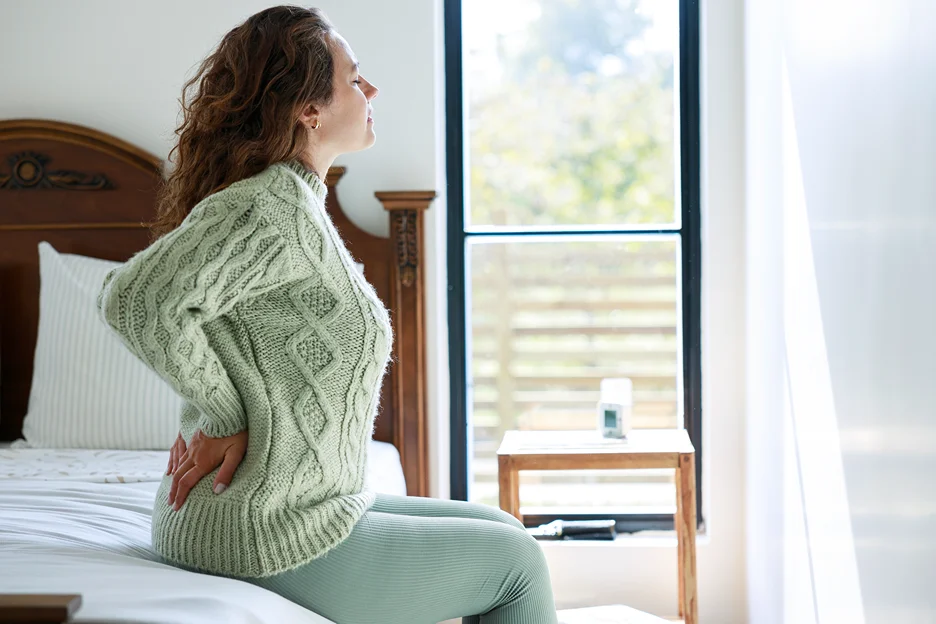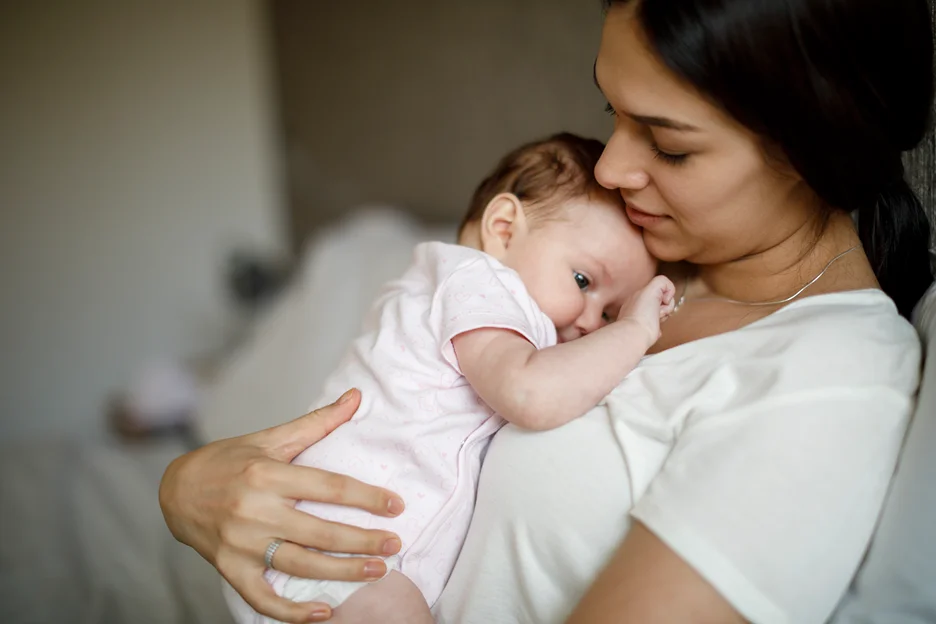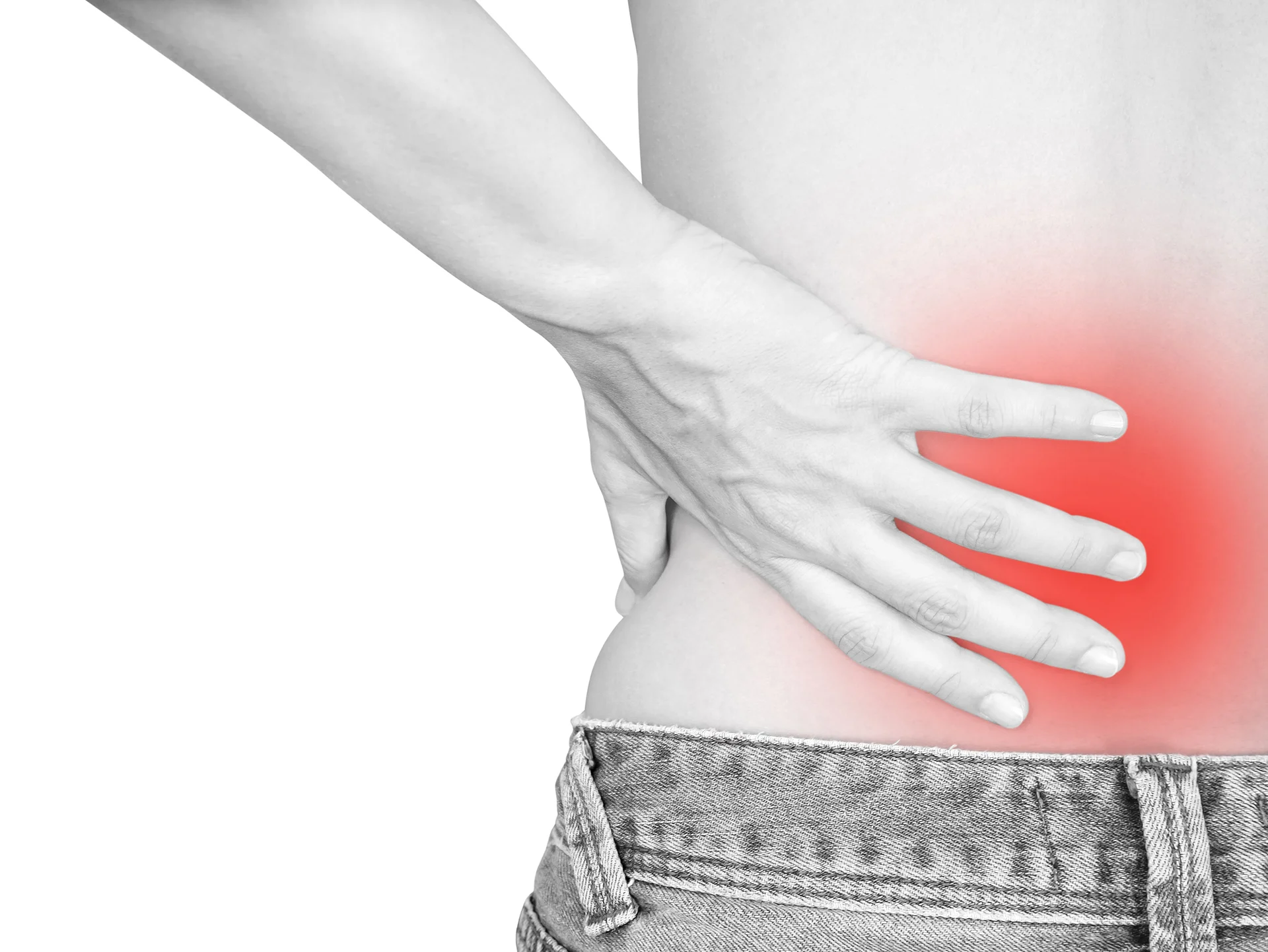Suffering from post-baby back pain? Discover our pro tips to restore spinal comfort and joyful newborn snuggles.
You’ve got a new baby to snuggle, yet your back is telling, even begging, otherwise. Why the post-pregnancy back betrayal?
The good news is with some targeted self-care and expert guidance, you can get back to pain-free baby bliss. Let’s walk through common causes, smart solutions, warning signs, and when to see a doctor, so you can focus on your growing family – not lingering lumbar pain.
Why Do I Have Sore Back After Labor?

Postpartum back pain after labor is caused by hormones like relaxin that loosen ligaments and destabilize joints, trauma from childbirth like C-sections that strain tissues, and weakened core muscles that inadequately support the spine and pelvis after pregnancy.
In this study published by BMC Women’s Health, the researchers looked at whether giving birth increases a woman’s risk of having chronic low back pain later in life. They compared over 1,000 women being treated for back pain – some who had given birth before and some who hadn’t.
The researchers discovered that women who had given birth were more likely to have ongoing functional back pain compared to women who hadn’t given birth. Specifically, 85% of women who had given birth had chronic back pain versus 77% of women who hadn’t given birth.
After accounting for factors like age, weight, and race, women who had given birth still had an 11% higher risk of having chronic back pain that interfered with their daily activities.
For women who had given birth, those who recalled having severe back pain shortly after giving birth were 19% more likely to have disabling back pain currently compared to those without severe postpartum pain.
The researchers concluded that pregnancy and childbirth appear to increase a woman’s risk of struggling with chronic, functionally limiting back pain later in life.
Barring that particular risk, here are the other potential causes of postpartum back pain based on our findings:
Hormonal Influences
After pregnancy, your body is still flooded with the hormones relaxin and progesterone to help your body recover from labor and delivery. According to our specialists, these hormones cause increased mobility and laxity in your ligaments and joints as they prepare your body for childbirth.
This destabilization of joints, combined with ligament and muscle weakness, can contribute to back soreness and pain.
Physical Trauma During Labor
The process of labor itself unfortunately commonly leads to trauma and strain on the lower back and pelvic floor region. From our providers’ experience:
- The use of forceps or vacuum delivery methods is associated with lower back injuries postpartum in 25% and 13% of women respectively.
- Lifting and caring for your new baby with poor posture also overworks the back muscles if they are already weak from pregnancy.
- Pelvic floor dysfunction from pregnancy can additionally refer to pain in the lower back.
Core and Postural Muscle Weakness
Carrying around that adorable bump for 9+ months overstretched your abdominal and postural back muscles as they try to compensate for the added weight and shifts in your center of gravity.
After delivery, these muscles remain weak and unstable, providing inadequate support for your spine. This muscle weakness is a primary driver of back pain after labor.
Read verified patient reviews of postpartum health specialists on Kaly to ensure you find a great expert dedicated to resolving maternal pain. Start your search here!
What Causes Low Back Pain After Giving Birth?
Low back pain after giving birth is caused by weakened abdominal muscles that strain to support the spine, trauma to the pelvis and lumbar spine during delivery, poor posture and body mechanics from repetitive motions like breastfeeding, and preexisting back dysfunction that is aggravated by pregnancy and postpartum demands.
For many new moms, the abdominal muscles become severely stretched during pregnancy as the uterus expands. Once the baby arrives, these muscles remain weak and over-lengthened, making it difficult to support and stabilize the lower spine properly.
Pain can occur when lifting and carrying your baby, bending down, or even just walking. The lower back has to work overtime without adequate muscular support.
Additionally, our providers point out that difficult deliveries involving forceps, vacuum extraction, or cesarean sections often directly injure muscles, joints, and ligaments in the pelvis and lower back region. This trauma contributes to postpartum lumbar pain.
How Long Does Back Pain Post C-Section Last?
Back pain after a C-section typically lasts 4-6 weeks, with the worst pain in the first 1-2 weeks that gradually improves over time.
Pain beyond 6 weeks may indicate complications and requires medical evaluation to identify factors interfering with recovery, like weakness, poor healing, or scar tissue.
- Immediate Postpartum Period
In the first 1-2 weeks after a C-section, back pain is often most severe as anesthesia wears off and the incision site heals. Factors like surgical trauma, epidural side effects, IV fluids, and mobility challenges contribute to early discomfort.
With rest and pain management, pain should gradually improve during this period.
- 2-4 Weeks After C-Section
Many women continue to have mild back pain around the incision site and general muscle soreness in the first-month post-delivery.
Discomfort may flare up while caring for your baby, breastfeeding, moving around, and performing daily activities. Self-care remedies and over-the-counter pain medication can provide relief.
- 4-6 Weeks After C-Section
For most new moms after an uncomplicated C-section, back pain resolves within 4-6 weeks as the tissues finish healing. If significant pain persists past 6 weeks, talk to your OBGYN.
- Beyond 6 Weeks
A minority of women have back pain lasting many months after a cesarean delivery, according to our analysis. Contributing factors can include pre existing back dysfunction, weakness, scar tissue adhesion, or poor surgical healing.
How to Manage Postpartum Upper and Lower Back Pain?

Try out these collection of home remedies for lower and upper back pain after your pregnancy:
- Improve Posture
Be mindful of posture when sitting, standing, and nursing. Keep shoulders back and spine in a neutral, upright position. Use supportive pillows as needed.
- Strengthen Muscles
Gently perform core and back exercises like cat/cow stretches, glute bridges, and thoracic rotations to rebuild weakened muscle tissue. Start slowly.
- Increase Flexibility
Stretch tight upper back and neck muscles using doorway chest openers, shoulder rolls, and kneeling back extensions. This eases tension.
- Use Bodywork Techniques
Apply heat packs or ice to relieve muscle spasms and pain. Get a massage to ease muscle knots and tension.
- Relaxation
Take relaxing breaks as you can, practice breathing exercises, and reduce stress.
Can Breastfeeding Cause Back Ache Post Pregnancy?
Breastfeeding can cause back pain due to hormonal changes loosening ligaments, poor curled-over posture during nursing sessions that strains muscles, trauma from delivery impacting the back, and repeatedly carrying the baby in unsupported positions.
Common Causes
- Hormonal changes during and after pregnancy lead to loose, unstable ligaments that strain to properly support the spine and pelvis.
- The curled, leaned-over positions and repetitive motions while breastfeeding often strain the neck, shoulders, and back muscles. Looking down at your bundle of joy for extended periods without adequate back support is especially problematic.
- Physical trauma during delivery that impacts the pelvis, like C-sections or the use of forceps, can exacerbate back pain when pressure is placed on these regions during nursing sessions.
Impacts on Breastfeeding
- Severe, persistent back pain can negatively impact breastfeeding duration if it becomes too disruptive for moms to comfortably continue nursing.
- In rare cases of high-level spinal injuries, risks like autonomic dysreflexia require early weaning.
- But for most women, issues like neck tension and posture misalignment can be proactively addressed with bodywork, allowing comfortable breastfeeding to continue.
Can Back Bone Pain After Delivery Indicate a Deeper Issue?
Severe, worsening, or neuropathic back pain after delivery may indicate an underlying injury, inflammation, or complication rather than normal postpartum recovery, thus requiring prompt medical evaluation.
This level of pain often indicates the discomfort is not improving or resolving as expected during the normal postpartum recovery timeline. It may also signify potential nerve involvement that requires assessment.
Additionally, any “extreme” or intense localized back pain after delivery should not be ignored, as it may reflect an underlying injury, inflammation, or complication needing attention.
Likewise, our providers emphasize that any severe or progressively worsening symptoms in the postpartum period, including but not limited to back pain, should prompt evaluation to rule out serious conditions like postpartum preeclampsia.
Sleeping Positions for Postpartum Back Pain Relief
According to postnatal care experts at Kaly, certain sleep positions can help reduce back pain during the postpartum recovery period:
Best Sleeping Positions
- Side sleeping in a curled fetal position with knees bent and a pillow between the legs aligns the hips and spine to take pressure off the lower back.
- Back sleeping with a pillow under the knees maintains the natural curve of the lower spine to minimize strain. Avoid this during pregnancy.
- Stomach sleeping with a pillow under the hips and lower stomach prevents the back from sagging into a U-shape that strains alignment.
Why These Positions Help
- The curled fetal pose opens up space between vertebrae, taking pressure off the discs and nerves for lower back relief.
- Pillows under the knees or legs help preserve the natural spine curves whether on the back or side, maintaining proper alignment.
Other Tips for Relief
- Use a firm mattress and supportive pillows to help the back.
- Follow good sleep habits like limiting light and noise disturbances for optimal rest.
When to See a Doctor for Postpartum Back Pain

You should consult your OBGYN or primary care provider if having:
- Unbearable or worsening back pain not relieved by self-care techniques. This indicates the problem is not resolving as expected.
- Back pain accompanied by fever, which may signal infection.
- Numbness or tingling radiating from the back into the groin, genitals or buttocks. This can reflect nerve compression requiring assessment.
- Upper back or neck pain, which is less typical postpartum.
- Feeling weak or uncoordinated in the legs. This could indicate a spinal or muscular injury needing evaluation.
Emergency Symptoms Requiring Immediate Attention
- Sudden, severe abdominal pain that gets progressively worse over time. This can indicate a serious complication.
- Chest pain or trouble breathing, requires rapid heart and lung evaluation.
- Heavy vaginal bleeding greater than a normal period, signaling potential hemorrhage.
- Severe headache or vision changes that may reflect preeclampsia.
- Swelling in the legs, hands or face could indicate preeclampsia.
- Confusion or disorientation potentially signaling a seizure, stroke, or emergency.
Go With Your Instincts
Always go to the ER if you feel your health is at serious risk. When in doubt, get medically evaluated.
Our state-of-the-art search makes it easy to find seasoned postpartum back pain specialists who fit your unique needs and preferences. Book a consult now!
